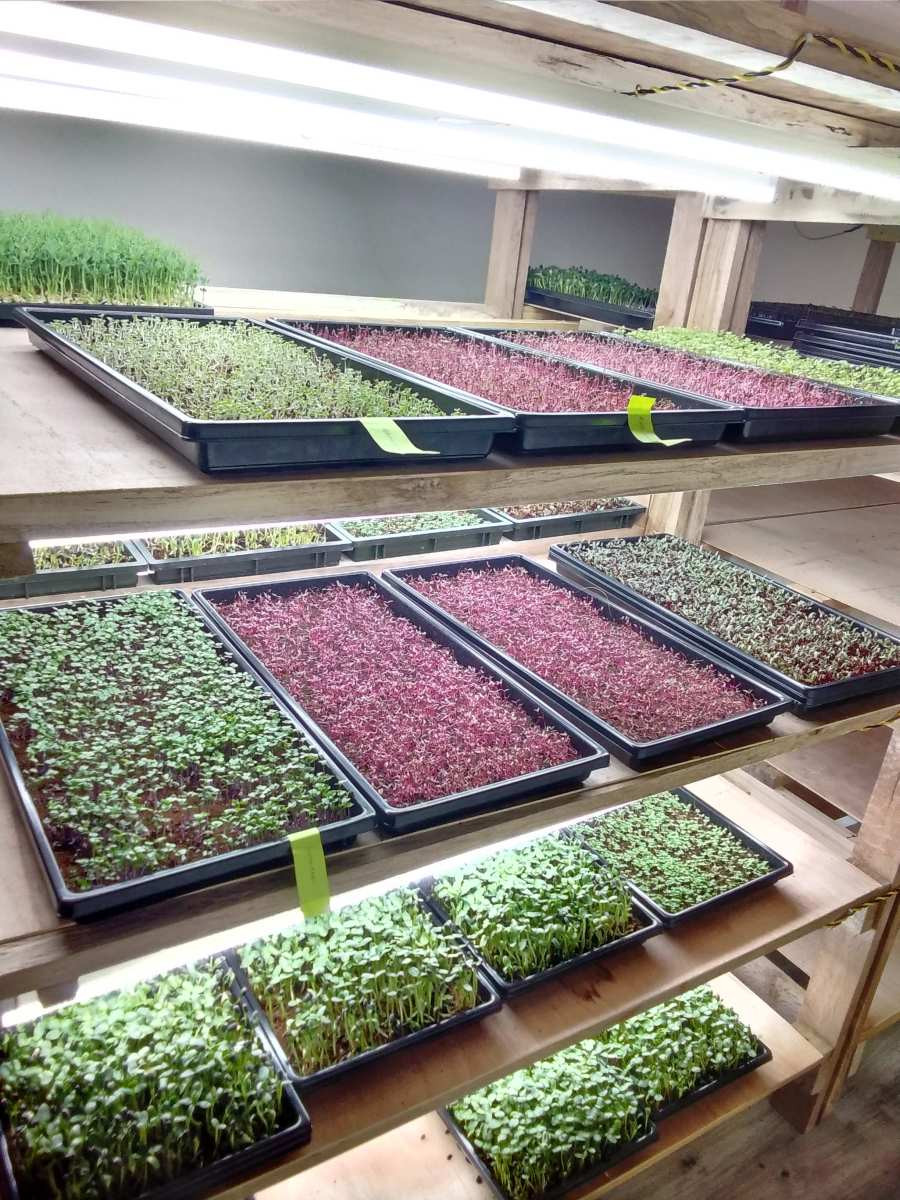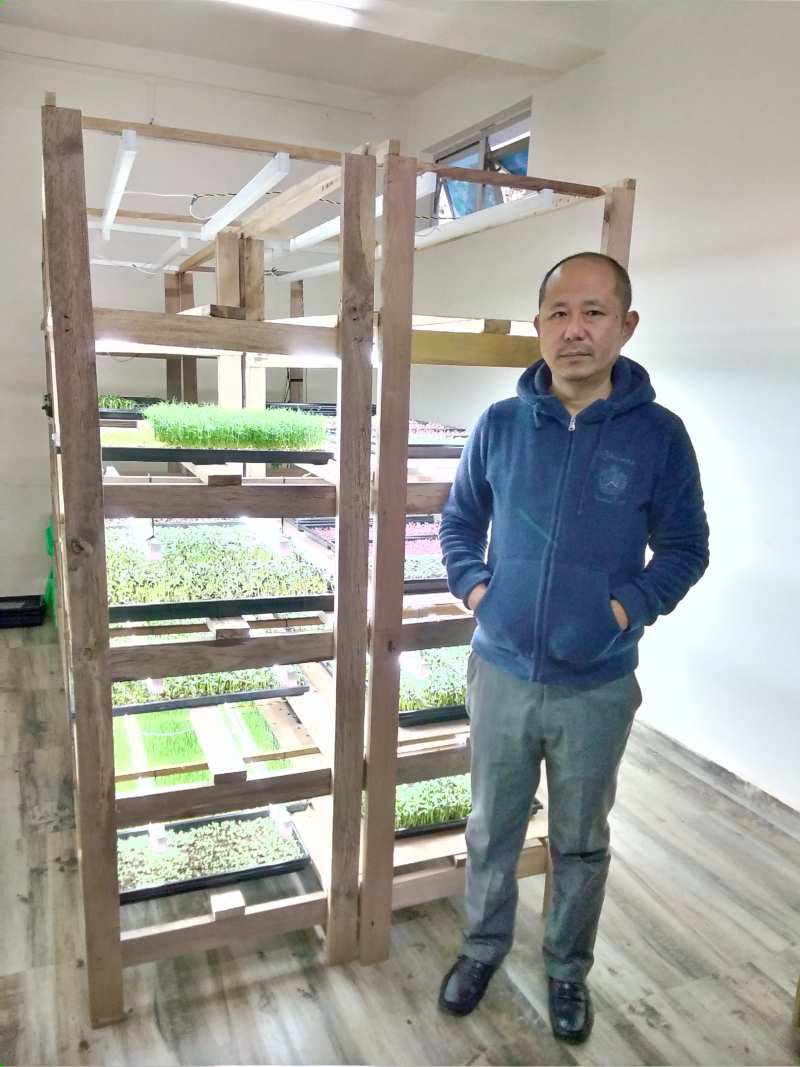‘Urban Greens’ provides home delivery of microgreens in Kohima, with the aim to provide a healthy alternative to Naga eating habits.


Morung Express News
Kohima | December 17
Urban Greens began as a hobby for 43 years old Vikhapi Valeo, a father of four, which has now been established into a small local business that grows and supplies microgreens on home based delivery in Kohima, with its main focus to provide a healthy alternative to Nagas' eating habits.
During the 2020 lockdown, I decided to experiment with the concept of microgreens, says Valeo. Experimenting in his living room, researching through the internet and reading books on gardening, Valeo became a self taught microgreens grower. Valeo started with peas, brocolli, sunflower and mustard, which has now expanded to wheatgrass, purple radish, Kale, and Kohlrabi.
Microgreens are young vegetable greens that are harvested before they are fully grown. What started as high value gourmet greens is now considered the future of gardening/farming in urban settings because of its nutritional profile, its vertical aspect, compact space usage, short growth cycle, and its ability to grow year round. Studies also indicate that these greens can address the problem of global nutrition insecurity from the household level.
With the help of his wife Hokali, Valeo first started growing the greens with local manure. However, they moved on to using cocopeat since it is more sterilized. On a specialized tray, the seeds are sown and covered in the dark for about four days. In his experience, the rate of germination is almost 80 percent.
“Here at Urban Greens, we grow the microgreens with LED lights. In a day, they require 9-10 hours of constant light. They need to be grown under certain temperature and humidity. And depending on how dry the greens are, you have to water them,” says Valeo.
For the Kohima climate, the microgreens require the humidity range of 40-60 percent and a temperature of 18-22° C. “You have to learn to control the conditions. If you can maintain that and water them when required providing proper light, then the greens are ready to be harvested within 6-7 days when it reaches 3 to 4 inches of growth. That's when the nutrients are densest,” says Valeo.
Known for its nutritional profile, each microgreen species contain vitamins (including A, C, E, and K), polyphenols, glucosinolates and omega-3 fatty acids, as well as fibers and minerals. “Since the greens are nutrient dense, it has more vitamins and antioxidant properties than the adult vegetable. It takes around 10 to 15 days for the microgreens to grow and harvest,” says Valeo, informing that wheatgrass microgreens are on high demand among diabetic and cancer patients.
“This type of vertical farming saves a lot of space. In Kohima, we have limited open spaces so microgreens gardening is an added benefit. It is self sustainable if one takes proper care of it.I feel this concept of vertical farming will gain significance especially for urban areas, with many metropolitan cities already adopting this farming,” states Valeo.
Speaking from experience, Valeo views that Microgreens can be grown the whole year round if one can manipulate with the temperature. A drawback for the microgreens growers, is the short shelf life of the greens which lasts only a week after they are harvested.
“A concept which started in the US in the 1980s is only percolating to us just recently,” remarks Valeo, sharing that the demand for microgreens is also gaining ground in Kohima especially among the health conscious population. On the market opportunities of microgreens, Valeo notes that a huge amount of money is not required to start the microgreens farming. “However, you need a specialized based customer with the concept being new for a state like Nagaland. And demand needs to be created first,” states Valeo.






